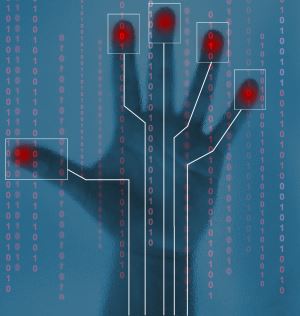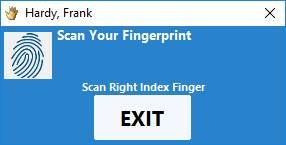Recently I was reading a time and attendance discussion group on LinkedIn and one member was having problems with “buddy punching”. Buddy punching, put simply, is the act of one employee using using their employer’s time clock to punch in and out for another employee. Sometimes this can be completely innocent as in “hey my hands are full can you punch my card for me” but more often it is designed to defraud in a situation like this: “hey I am going to be late today can you punch my card for me so no-one notices”. Regardless of the reasons for buddy punching it’s a real cost to business. The American Payroll Association conducted a study into it and found that 75% of businesses experienced it, that the average “buddy puncher” stole 6 hours a week from their employer, and that 2.2% of American payroll costs could be attributed to it.

Stop Buddy Punching with Biometric Security
So how do you stop buddy punching? Many vendors suggest using swipe cards, or bar coded ID badges, or RFID fobs, or even PIN coding their timeclock system. These certainly can help and will largely eliminate casual buddy punching. However, if there’s a systemic buddy punching issue there’s very little to prevent employees sharing their PIN, or handing someone their badge or fob the day before they are going to be late. In the case I discussed above with fictitious employees even if there is a badge, RFID fob, or a PIN that’s not going to help if they are issued to a supervisor intent on defrauding their employer. In these cases the only real solution is to adopt a timeclock system that includes some sort of biometric security features, be they simple or complex.
Facial Image Capture
The simplest “biometric” check is to use a time clock that can capture and image of an employee when they punch in or out and then tag the time punch with that image. If an employee suspects some sort of buddy punching fraud is occurring it’s simply a matter of examining the time records and viewing the associated captured images. This sort of system is fairly foolproof. The only issue that could arise is if an employee covers the camera capturing images and pleads ignorance. Of course it will be obvious to an employee if this sort of event becomes commonplace that there is a buddy punching problem with an employee or employees in that location. In that case the next step is to implement a true biometric time clock.
Biometric Feature Recognition
A biometric time clock will use some biometric feature of an employee (such as a fingerprint, facial features, or retina) to authenticate that an employee is who they say they are when they punch in or out. Generally this is fairly foolproof, however, there is one case where it is not. Imagine an employee supervisor who is intent on buddy punching for another employee because they are a relative. When they enroll their relative into your sophisticated biometric attendance system they record their relative’s fingerprint as normal. Most systems have the capability to store more than one fingerprint for an employee, and in our example the ill-intentioned supervisor uses this spare slot for their relative to store one of his / her own fingerprints. This finger wouldn’t be the finger they normally use to punch in or out of course, but one they never use (for example their left little finger). Now, if the relative is late or absent from work the supervisor can simply use their left little finger to punch in and out for them. And no-one would ever know,

Verify a Fingerprint in Time Clock MTS
So What’s the Answer?
There are two possible solutions to the complex situation above. The first is to use a more sophisticate biometric recognition system such as either facial recognition or retina scanning. This sort of technology is still fairly complex and not particularly affordable. It certainly isn’t yet available in lower cost time clock software or time clock hardware solutions. The other solution is to combine image capture with finger scanning. This way if an employer suspects that some sort of fraud is going on they can simply examine the images captured along with an employee’s time punches. Time Clock MTS is one of the few time clock systems on the market now that do both of these things and truly help your company stop buddy punching. You can read more about taking images of your employees as they punch in or out here and learn all about the biometric features of the system here.
There’s a 30 day trial available and the features you need to secure your time collection processes completely are included in the standard version of the software!

